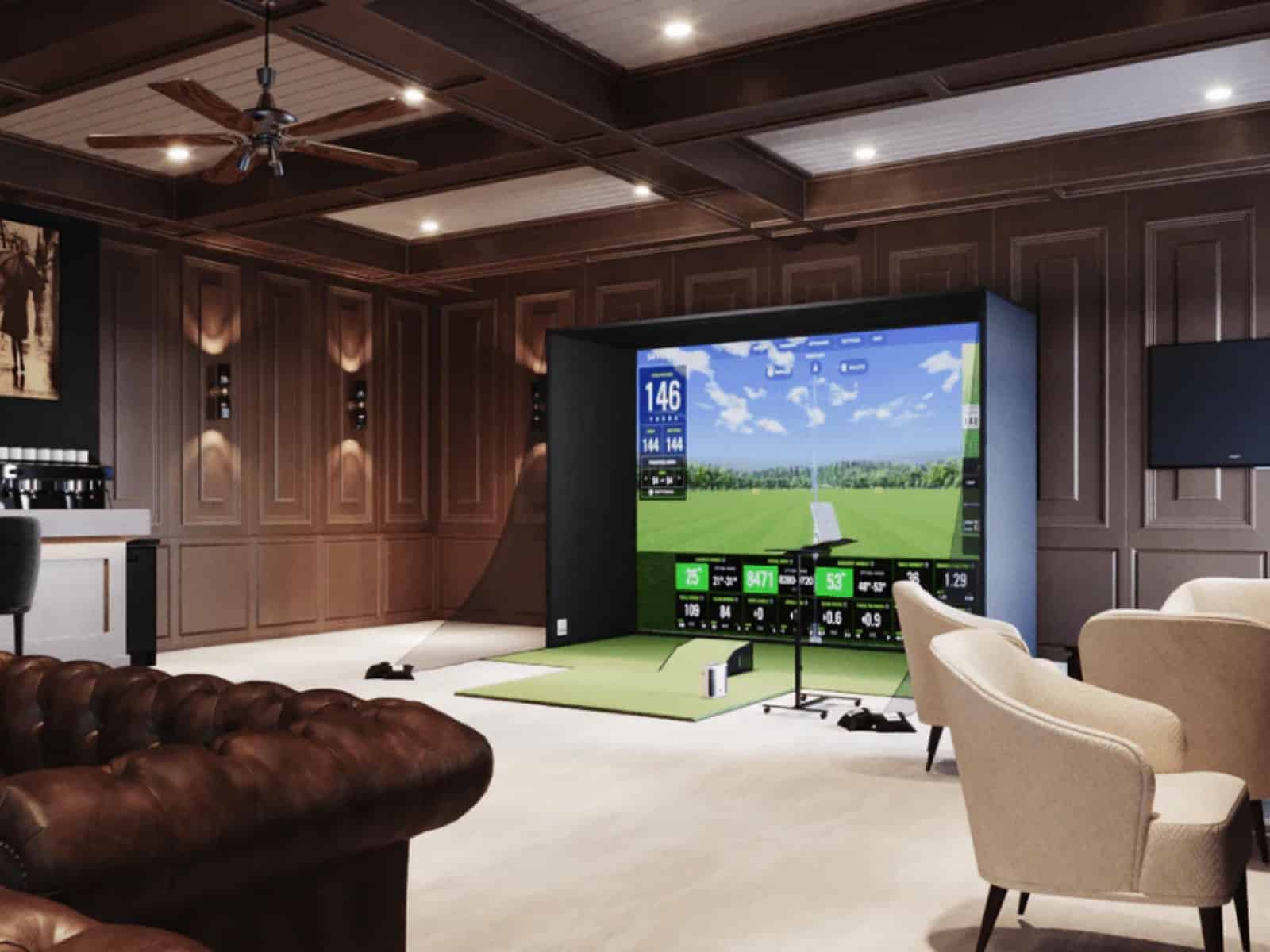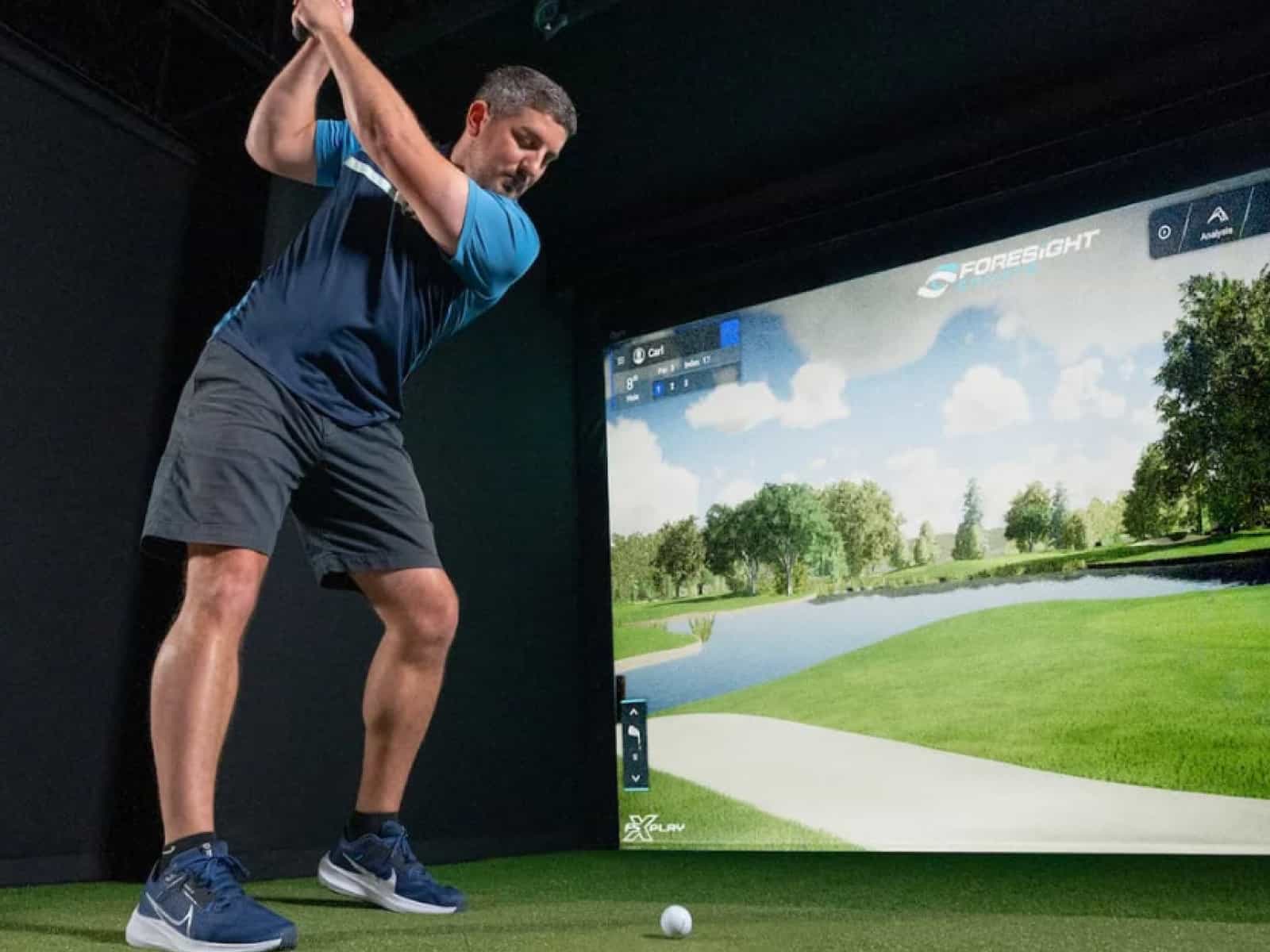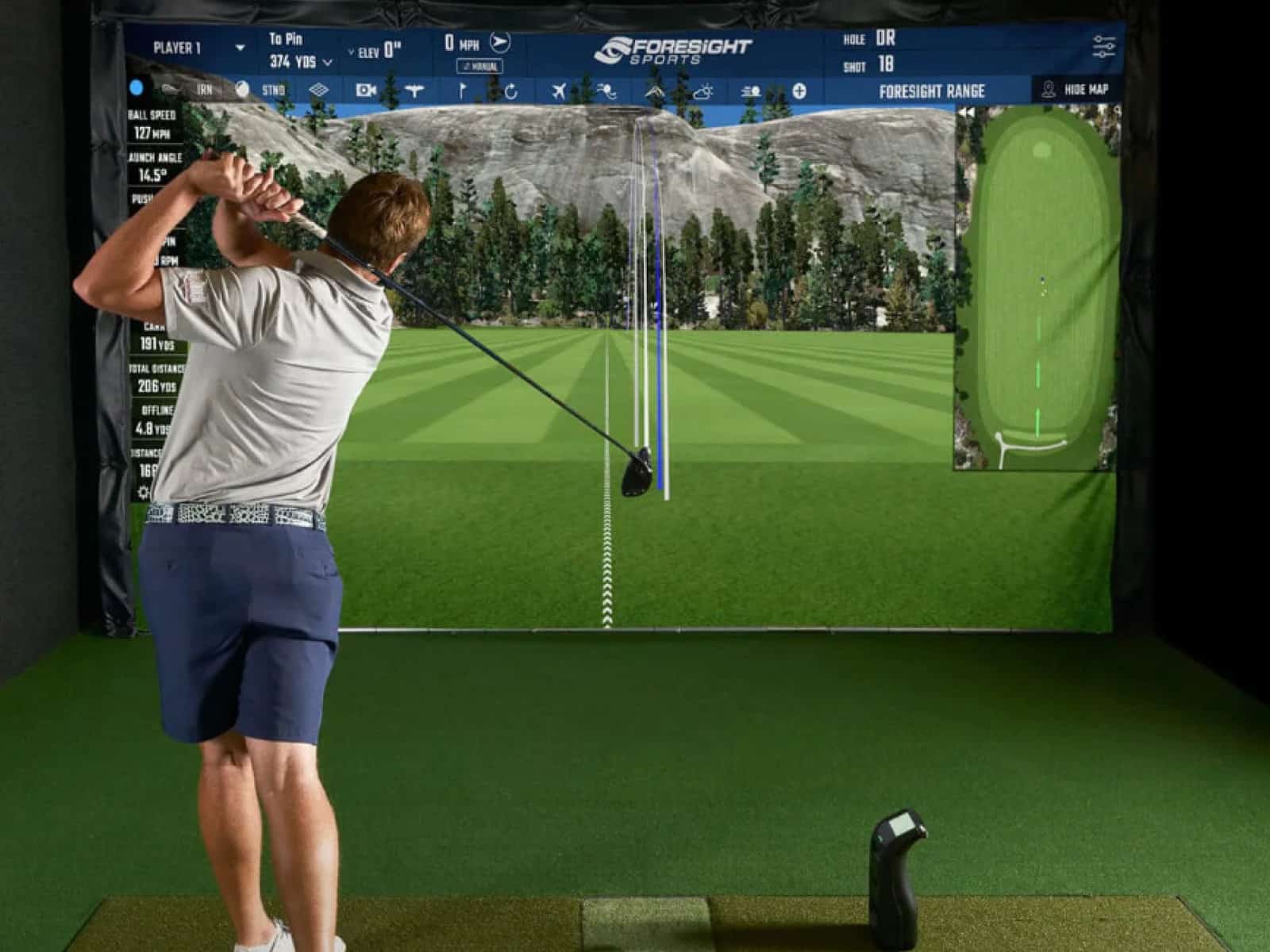Golf simulator technology has exploded in popularity in recent years, allowing passionate golfers to bring the experience of playing a real course indoors. According to recent research, the golf simulator market had a value of USD 1485.23 million in 2022, and it is expected to reach USD 3237 million by 2031, growing at a CAGR of 9.2% from 2023 to 2031.
With system packages ranging from just $600 to over $70,000, there is tremendous variation in product offerings and pricing. This article will examine the key factors that influence golf simulator costs across the pricing spectrum, overview the main package tiers available, and provide guidance on selecting the right system based on your budget and needs.

By understanding the critical elements that impact pricing, you can zero in on the package tier that aligns with your swing analysis needs, visual immersion preferences, and budget limitations. With custom solutions available across all price points, investing in a golf simulator grants convenient access to professional-level tools for improving your game year-round.
Golf Simulator Price Ranges
Golf simulator packages range tremendously in price from just a few hundred dollars up to the cost of a luxury vehicle. Many factors account for these vast discrepancies in golf simulator costs and capabilities. By weighing your needs, goals, and budget, you can find the ideal option to enhance your golf game.
Golf simulator pricing includes:
- Entry-level systems from $600-$5000 offer an affordable starting point with basic functionality and swing metrics.
- Mid-range packages from $5000-$15,000 add enhanced accuracy, visuals, and simulation play for improved realism.
- High-end setups from $15,000-$40,000 provide a luxury experience with tour-level accuracy and ultra-realistic course simulations.
- Professional systems costing $40,000+ cater to the most serious golfers with premium components for unrivaled performance.
For most golfers, the mid-range tier hits the sweet spot between price and performance. Still, budget-focused players can start small, and serious golfers may merit professional systems.
Key Factors That Impact Golf Simulators’ Cost
Here are some determining factors that affect the pricing of different simulator packages:
Launch Monitor Technology
One of the most critical components of any golf simulator setup is the launch monitor. This advanced piece of technology tracks detailed metrics on each shot, providing useful feedback to help you analyze and improve your game. As launch monitor technology advances, it has a major impact on the pricing tiers of golf simulator packages.
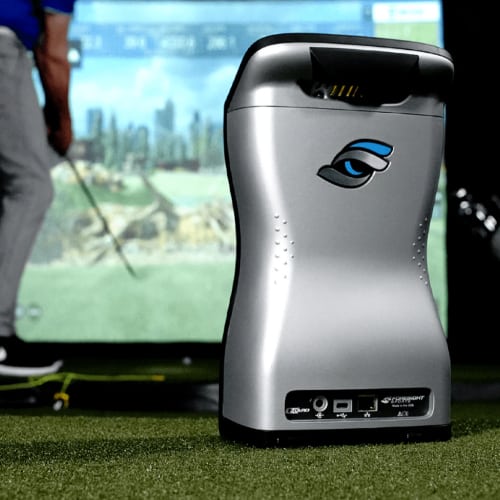
For example, high-end units that use multiple high-speed cameras for tracking (like the Foresight GC3, GCQuad and GCHawk or Uneekor’s lineup) as well as those that combine different tracking technologies into a premium hybrid system (such as the Trackman 4, Flightscope’s X3, etc.) are more technologically advanced and cost much more than simpler units. These premium monitors usually make the prices of packages much higher.
Entry-Level Launch Monitors
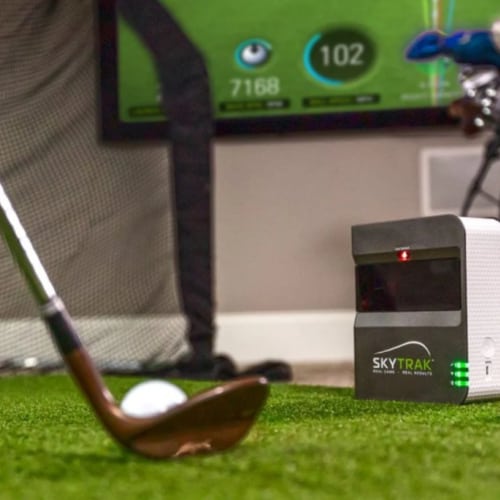
At the budget end of the spectrum, you’ll find basic launch monitors like the Approach R10 and SkyTrak. These units provide essential shot data like ball speed, launch angle, side spin, and carry distance. While limited compared to pricier options, entry-level launch monitors give you helpful swing and ball flight metrics to work on your fundamentals. Systems like the SkyTrak can support basic simulation software to visualize shots. Key features of budget launch monitors include:
- Essential shot metrics like ball speed, launch angle, and total distance
- Ability to track basic shot shapes and trajectories
- Compatibility with practice range simulation software
- Price range of $500 to $2,000
Though affordable, the accuracy and sensor technology is not as advanced compared to high-end models. However, for golfers on a budget, they provide useful feedback and practice capabilities.
Mid-Range Launch Monitors
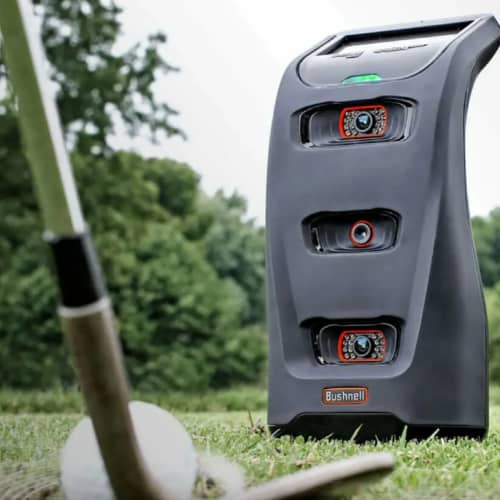
In the mid-tier price range, you’ll find enhanced launch monitors like the Bushnell Launch Pro, Uneekor’s EYE MINI, Skytrak Plus, and Full Swing Kit. Priced from $2,000 to $5,000, these units provide expanded swing and ball data including spin rate, smash factor, descent angle, etc. The sensors and camera systems are more advanced, bolstering accuracy.
Key features of mid-range launch monitors include:
- Expanded shot metrics like spin rates, smash factor, descent angle
- Improved sensor accuracy compared to entry-level
- Simulation capability for basic virtual courses
- Price range of $2,000 to $5,000
For players seeking richer feedback and simulation play, mid-range launch monitors constitute a sweet spot between price and performance.
High-End Launch Monitors
High-end launch monitors provide even more advanced technologies and improved accuracy. They cost anywhere between $5,000 and $10,000, and popular examples include the Foresight Sports GC3, The Uneekor QED and the EYE XO systems.
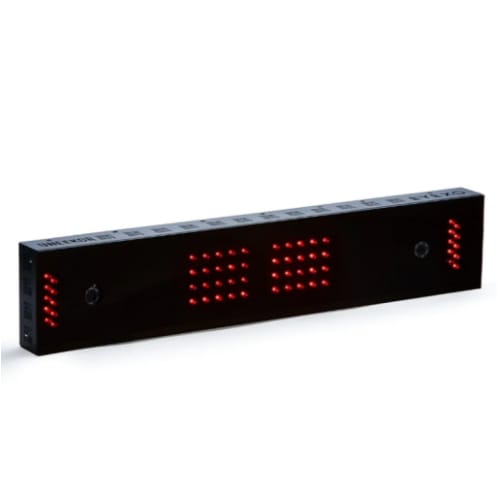
Some of the main features of high-end launch monitors include the following:
- Ultra-high-speed cameras for precision ball tracking
- Pinpoint measurement of spin axis, face angles, and other advanced metrics
- Integrated simulation software with famous course options
- Wireless connectivity and shot recording capabilities
- Premium construction and components for reliability
These launch monitors are usually chosen by serious golfers who want to practice and improve their game with highly accurate data and feedback.
Professional-Grade Launch Monitors
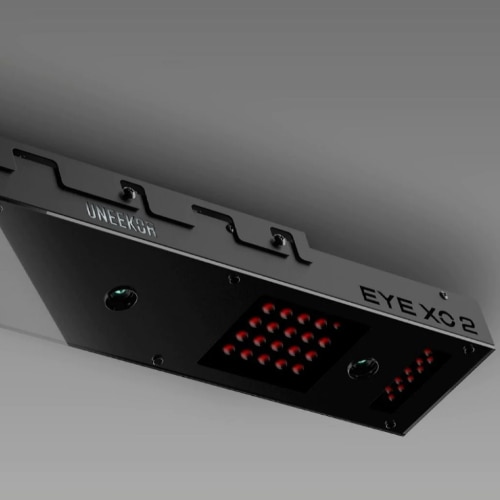
At the top end, you have commercial-grade launch monitors like the Foresight Sports GCQuad, GCHawk, Flightscope’s X3, Trugolf’s Apogee, Uneekor’s EYE XO2 and TrackMan 4. With price tags from $10,000 up to $30,000, they provide unparalleled accuracy and comprehensive shot data. Using advanced camera systems and radar or stereoscopic technology, high-end launch monitors track the full ball flight and club delivery with extraordinary precision.
Here are a few features of high-end launch monitors:
- Pinpoint accurate shot data and club metrics
- Detailed ball model and full trajectory views
- Simulation and analysis used by top instructors and tour pros
- Price range from $10,000 up to $30,000
- Variety of game modes and challenges
For detailed swing diagnosis, game improvement, and ultra-realistic simulation at famous courses, commercial-grade launch monitors deliver unmatched performance. The price tag is steep, but they satisfy the needs of serious golfers and provide long-term playability. Within this same category, Trackman 4, Flightscope X3 and FS’ GCQuad and GCHawk monitors are the priciest available on the market today (with the best and latest technologies available).
As the launch monitor is arguably the most important element of a home golf simulator, carefully examine the sensor technology, metrics provided, simulation capability, and room requirements when selecting the right option for your goals and budget. From entry-level to tour-caliber, launch monitor choice greatly impacts the overall cost of a golf simulator package.
Simulator Software and Graphics
The software included in a golf simulator package can have a significant impact on the overall price. More advanced software with comprehensive features and famous course options commands a higher cost that gets built into the package pricing. The price of the software is usually defined by the number of features, game modes and playable virtual courses. Popular software options include Trugolf’s E6 Connect, TGC 2019, GSPro, SKytrak’s Subscription plans, Uneekor’s View and Refine (+), FS FSX 2020 & FSX Play, etc.

For example, a basic simulator package may include only driving range simulation software and basic swing analysis. This allows you to practice drives and view shot data, but lacks additional modes or capabilities. A package like this with minimal software is usually included in the price of the system, and good examples include Skytrak’s Basic Driving Range and Game Improvement subscription plans.
In comparison, a mid-range package typically includes simulation software with more variety – a driving range, different practice modes, and some famous courses to play virtual rounds. The added software capabilities increase the value and price.
High-end packages feature premium simulation software with ultra-realistic graphics and physics, a vast library of famous courses, competitive online events, and in-depth training tools. The robust functionality mirrors advanced stand-alone software that significantly enhances a simulator’s capabilities but also raises its cost. Excellent examples of premium software include ones by HD Golf, Full Swing, Trackman, etc.
So while hardware factors into a simulator’s price, included software plays a major role. Limited practice software keeps costs down, while high-end packages with advanced simulation capabilities and vast course libraries warrant premium pricing. Carefully weigh software needs against the budget when selecting a golf simulator package.
Hitting Mats and Screens
The hitting mat and screen are core components that majorly influence the simulation experience and pricing. High-end golf simulators use premium mats that mimic an authentic grass surface and fairway response. Top-tier screens provide vivid visuals for total immersion.
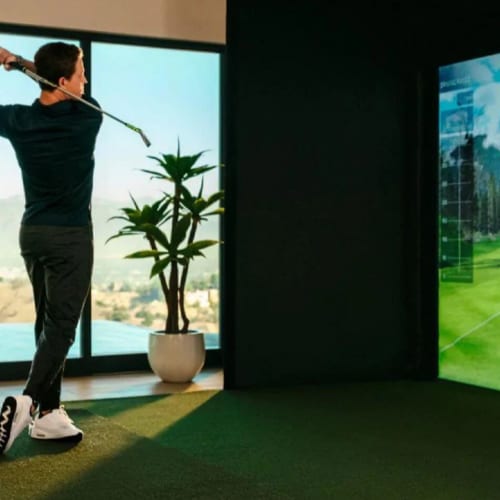
Entry-Level Hitting Mats
At the lower end of the budget spectrum, golf simulator packages include basic, low-pile hitting mats that lack a realistic grass texture and feel. These cost-effective mats are made from synthetic turf and provide a uniform surface to hit from. However, the minimal pile height and synthetic material limit the ball impact response and feel compared to real turf interaction.
These mats trade performance for affordability, typically costing under $500 as part of a package. Their low cost makes them a reasonable option for basic indoor swing practice, even though they don’t fully replicate the feel of real course turf.
While you sacrifice some realism with cheap hitting mats, they still offer a functional, budget-friendly indoor hitting option when used with impact screens or nets. Just don’t expect true course-like performance in terms of response and feel from low-cost mats. For that, you’ll need to upgrade to a higher-end option.
Mid-Range Hitting Mats
A step up from basic mats, mid-range golf simulator hitting mats use materials like polypropylene to provide enhanced durability and improved ball response compared to basic synthetic turf. These mats aim to emulate the look and feel of real grass but lack the ultra-realistic qualities of high-end options.
These mats include texturing and materials like polypropylene or tightly woven fibers designed to better simulate interaction through the turf. This construction allows for ball contact, launch, and response that is closer to real grass than basic mats. Mid-range mats carry a moderate price tag of around $2,000 as part of a simulator package.
Even if they don’t match premium mats in realism, mid-tier mats offer a nice upgrade in ball-turf feel and durability over cheap options. Their balance of improved realism and budget-friendly pricing makes them a nice value upgrade for the average golfer. So for a tangible upgrade in shot feel without breaking the bank, mid-tier mats strike a great balance.
Premium Hitting Mats
High-end, premium golf simulator packages include hitting mats crafted out of quality materials to mimic the performance of real grass with remarkable accuracy. These mats utilize premium turf materials like nylon fibers or extremely high-grade artificial grass to emulate the visual texture, density, and feel of actual golf course turf.
The meticulous construction enables highly precise shot-making with authentic ball response when making contact. These exceptional mats provide excellent control and an ultra-realistic indoor playing experience. Expect to pay $3,000 to $6,000+ for these top-tier mats as part of a high-performance simulator package.
For golfers seeking the most realistic possible indoor golfing experience to work on their shot-shaping skills, premium simulator mats made to mimic actual grass are worth the investment. Our favorite golf sim mat is Shop Indoor Golf’s SIG Flooring, which is aesthetically appealing and very comfortable to play on.
Screen Options
Entry-level systems often opt for simple impact nets. Mid-range setups add projector screens for enhanced visuals, while top setups have specialty ultra-short throw projectors and large screens perfect for a more immersive experience.
Great high-end screens are included with Shop Indoor Golf’s SIG12 enclosure (as well as SIG10 and SIG8), Rain Or Shine Golf’s Swingbay Enclosure and Top Shelf Golf’s Perfectbay enclosure. These screens were designed to withstand the fastest swings (of up to 250 MPH) and use advanced tension systems to provide the best image quality without distortion or wrinkles.
Room Setup Considerations
The space you choose for your golf simulator setup has a major impact on performance, cost, and the overall experience. Careful planning is required to select an appropriate room, address layout, height, materials, and other key factors. Things related to setup can increase the initial investment considerably; here are a few examples:

Noise Control
The sounds from golf swing impacts and simulator operation can be an issue in a home setting if not addressed appropriately. Using sound-dampening materials helps reduce acoustics. Foam padding on walls and ceiling absorbs noise and prevents echoes. Sound-dampening insulation panels also help minimize transmission to other rooms.
The hitting mat itself plays a role, with high-quality turf mats naturally reducing sound. Enclosing the simulator in an interior room surrounded by insulated walls provides an ideal quiet environment. Proper acoustic planning allows you to swing without disturbing the rest of the home, and that surely raises the installation bill.
Electrical installation and Ventilation
Operating a home golf simulator comes with some electrical and ventilation considerations. The launch monitor, projector, computer, and other electronic components require sufficient electrical outlets and power circuits to support steady operation. Dedicated 20A circuits are recommended to power simulator equipment.
Proper ventilation is also a must to prevent overheating. Strategically placed air conditioning vents, fans, or dedicated air circulation systems will maintain airflow and comfortable temperatures during extended simulator use. Factor these elements into planning and budget to enable peak performance.
Professional Installation
Given the complexities involved in simulator setup, hiring professional installers is highly recommended to get the most out of your new investment. Experienced technical teams will know how to optimally calibrate and configure the launch monitor, dial in projector positioning, assemble enclosures properly, and address any quirks unique to each space.
While costly, professional installation ensures your pricey simulator is set up for ideal shot tracking, visuals, and performance. Expect to budget $1,000 or more for installation services on top of the equipment purchases. Skilled experts are worth the peace of mind knowing your simulator will function at its full potential from day one.
Where to Buy Golf Simulators?
When it is time to purchase your golf simulator package, you’ll want to shop from a reputable online retailer that provides exceptional customer service and financing options. Three of the top online golf simulator shops to consider are:
Rain or Shine Golf
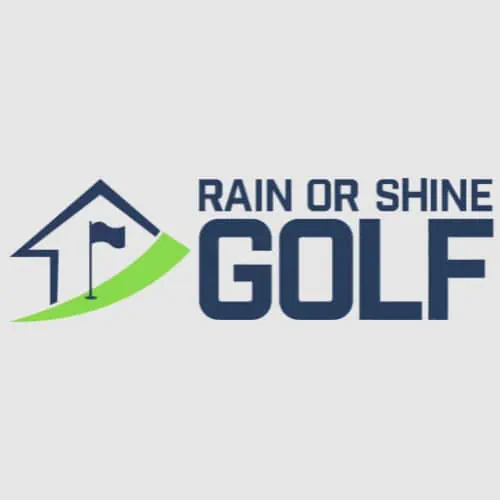
Rain or Shine Golf has one of the largest selections of golf simulator equipment, technology, and package bundles. They carry all major brands and configure custom solutions for any budget. Their team provides personalized guidance throughout the buying process. Rain or Shine also offers flexible 0% financing so you can spread out payments over time.
The Indoor Golf Shop

Known for outstanding customer support, The Indoor Golf Shop helps you select the ideal golf simulator from top brands. Their staff has extensive knowledge to match you with the right launch monitor, software, screens, and other components for your needs. The Indoor Golf Shop provides affordable payment plans as well.
Top Shelf Golf

Top Shelf Golf specializes in premium golf simulator packages using leading technology. They are experts at creating luxurious, high-end setups for discerning golfers. Top Shelf Golf has interest-free financing options available to help make these systems accessible.
Whether looking for an entry-level package or a professional-grade golf simulator, these trusted online retailers have the selection, knowledge, and financing to fulfill your needs. Their teams seamlessly guide you through the buying process from start to finish.
Final Thoughts
With the proliferation of golf simulator technology, packages are now available across a wide range of price points. Entry-level systems start at just $500, while professional-grade setups can cost over $70,000. There are plenty of options in between to accommodate diverse needs and budgets.
The key is to determine your must-have features, preferred upgrades, and budget range. Launch monitor accuracy, software capabilities, screen quality, and other components impact pricing. By outlining your goals and ideal experience, retailers like Rain or Shine Golf can suggest tailored bundles to match your needs at a sensible price.
While costs continue to decrease, golf simulators remain a significant investment. Will the affordability of golf simulators improve in the future?
Defining your needs and researching options prevents buyer’s remorse down the road. For help navigating the equipment, features, and pricing, take advantage of knowledgeable staff at leading online retailers. Investing wisely upfront will provide years of golf enjoyment and performance gains indoors.
Thanks for reading!

